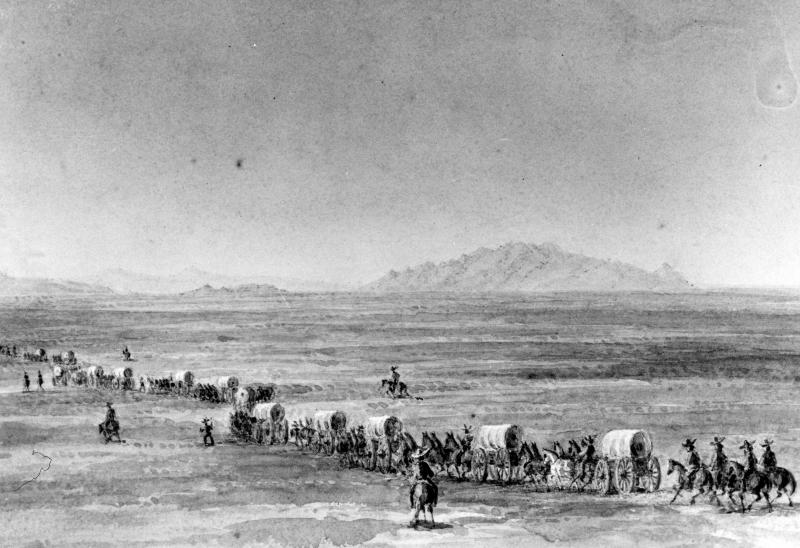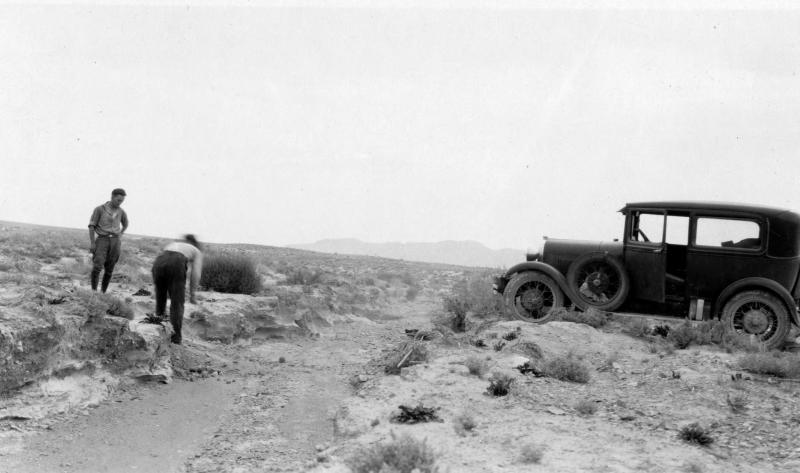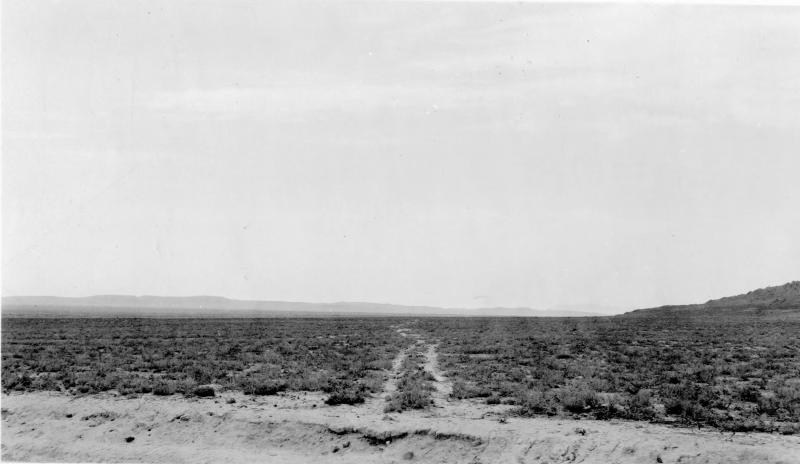West Desert
The West Desert, also called the Great Salt Lake Desert, is an expanse of salt flats and mountain ranges to the West of the Great Salt Lake. The flat pan surface is the former lake bed of the Pleistocene-era Lake Bonneville, which covered a huge expanse in the Great Basin. The Desert includes the Bonneville Salt Flats and several smaller mountain ranges including the Cedar, Lakeside, Silver Island, and Hogup Mountains. Most of the region receives less than eight inches of precipitation per year, with cold winters and hot summers. The surface of the salt pan sits at 4,250 feet above sea level. The U.S. military’s Utah Test and Training Range occupies the northern portion of the Desert. The West Desert was a significant impediment to wagon trains on the Overland Trails to California. In the 1840s and 1850s the Hastings Cutoff became popular, which crossed the desert to the South of the Lake and was shorter than the traditional route around the North side of the Lake. The 1846 Donner Party’s delays in crossing the West Desert likely contributed to them facing early season snows in the Sierra Nevada. On the western boundary of the Desert stands Pilot Peak, which emigrants would focus on as a destination (water could be found at the base of the mountain, after many dry miles) at the conclusion of this difficult and dangerous trek. Goshute and Western Shoshone peoples have made a living off the meager resources of the West Desert since time-out-of-memory.




